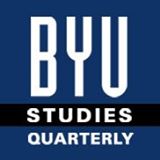BYU Studies

Keywords
Mormon studies, polygamy, demographics, polygyny
Abstract
What percentage of nineteenth-century Mormons practiced polygyny? Estimates of the answer have evolved as have the methods of posing the question. The authors use a simple demographic model to derive mathematical limits on polygyny prevalence. These limits provide benchmarks from which to assess whether polygyny prevalence in a given context is high or low compared to what is sustainable. If prevalence is high, the model may suggest where to look for reasons. Furthermore, where data are of low quality, the benchmarks provide a check on the reliability of the reported prevalence.
Many factors—such as differences in marriageable age, mortality, population growth, and migration—affect the demographic limits of polygyny in a community. The authors' demographic model suggests that, given the parameters observed in nineteenth-century Utah, polygyny prevalence in excess of 15 to 20 percent of males and 25 to 30 percent of females was implausible. Of course, pockets of higher percentages, offset by lower percentages elsewhere, were both possible and likely. St. George, Utah, was apparently one of those pockets.
Recommended Citation
Lambson, Val and Bitton, Davis
(2012)
"Demographic Limits of Nineteenth-Century Mormon Polygyny,"
BYU Studies: Vol. 51:
Iss.
4, Article 3.
Available at:
https://scholarsarchive.byu.edu/byusq/vol51/iss4/3
